

Case Study Briefs
Filter case study briefs.
- Other economic
- Bioremediation
- Play equipment
- Traffic calming
- Shade structure
- Reused/recycled materials
- Rainwater harvesting
- Permeable paving
- Bioretention
- Onsite energy generation
- Native plants
- Local materials
- High-albedo materials
- Greywater reuse
- Food garden
- Efficient lighting
- Efficient irrigation
- Educational signage
- Blackwater treatment
- Active living
- Biodiversity
- Complete streets
- Conservation
- Cultural landscapes
- Green communities
- Health care
- Learning landscapes
- Mental wellness
- Placemaking
- Restoration
- Revitalization
- Social equity
- Urbanization
- Civic/Government facility
- Conference/Retreat center
- Courtyard/Plaza
- Garden/Arboretum
- Golf course
- Healthcare facility
- Industrial park
- Mixed-use development
- Multi-family residence
- Museum/Cultural center
- Nature preserve
- Park/Open space
- Recreational trail
- Resort/Hotel
- School/University
- Single-family residence
- Sports facility
- Stormwater management facility
- Stream restoration
- Streetscape
- Transportation
- Urban agriculture
- Waterfront redevelopment
- Wetland creation/restoration
- Working landscape
- Youth/Community center
- South Korea
- Cold desert
- Continental mediterranean
- Tropical monsoon
- Tropical savanna
- Cold semi-arid
- Hot semi-arid
- Hot-summer Mediterranean
- Warm-summer Mediterranean
- Humid continental
- Humid subtropical
- Tropical rainforest
- Under 1 acre
- 20-50 acres
- 50-100 acres
- 100-1,000 acres
- Over 1,000 acres
- Under $100,000
- $100,000 - $500,000
- $500,000 - $1,000,000
- $1 million - $10 million
- $10 million - $100 million
- $100 million - $500 million
- Over $500 million
Houston Arboretum and Nature Center, Phase 1
Houston, TX
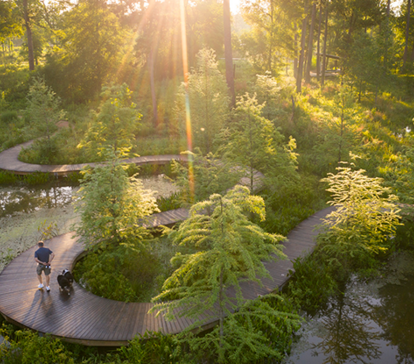
Download project and benefit information for all case studies. Data will be downloaded as a .csv file.
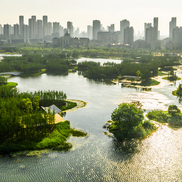
Fish Tail Park
Nanchang Shi , Jiangxi Sheng , China
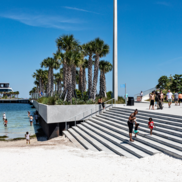
St. Pete Pier
St. Petersburg , Florida
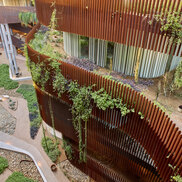
Environment and Natural Resources 2 Building (ENR2)
Tuscon , Arizona
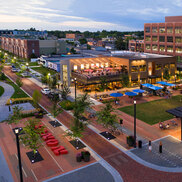
Monon Boulevard and Midtown Plaza Phases 1 and 2
Carmel , Indiana
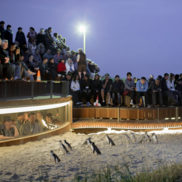
Summerland Peninsula Master Plan and Visitor Centre Precinct
Summerlands , Victoria , Australia
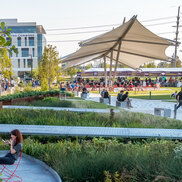
Cortex Commons
St. Louis , Missouri
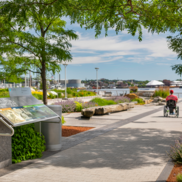
Spaulding Rehabilitation Hospital
Charlestown , Massachusetts
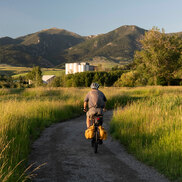
Story Mill Community Park
Bozeman , Montana
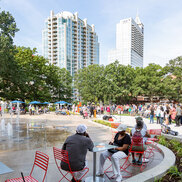
Moore Square
Raleigh , North Carolina
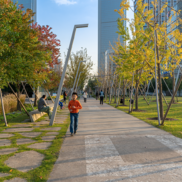
Xuhui Runway Park
Xuhui Qu , Shanghai Shi , China
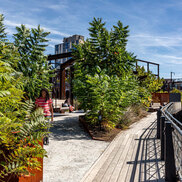
The Rail Park, Phase 1
Philadelphia , Pennsylvania
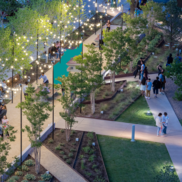
El Paso Pedestrian Pathways
El Paso , Texas
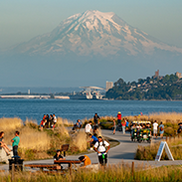
Dune Peninsula at Point Defiance Park
Tacoma , Washington
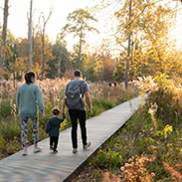
Houston , Texas

Suining South Riverfront Park
Suining Shi , Sichuan Sheng , China
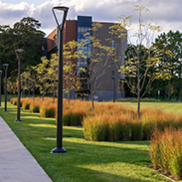
STLCC Forest Park Center for Nursing and Advanced Health Sciences
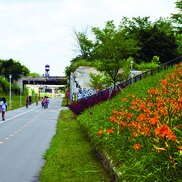
Dequindre Cut Greenway
Detroit , Michigan
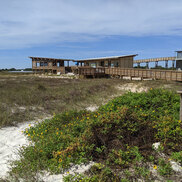
Gulf State Park Master Plan and Phase 1
Gulf Shores , Alabama
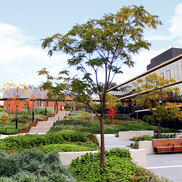
Bendigo Hospital
Bendigo , Victoria , Australia
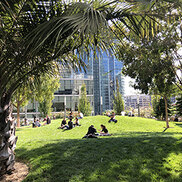
Salesforce Transit Center Park
San Francisco , California
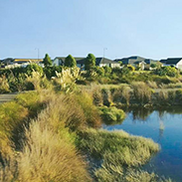
Te Whāriki Subdivision Phases 1 and 2
Lincoln , New Zealand
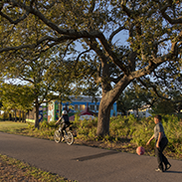
Lafitte Greenway
New Orleans , Louisiana
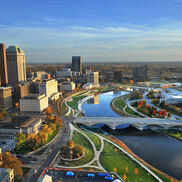
Scioto Mile and Greenways
Columbus , Ohio
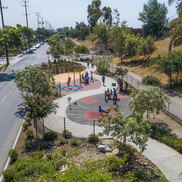
Ricardo Lara Linear Park
Lynwood , California

15 Projects that showcase sustainability through landscape design

The art of blending the natural environment with the built environment to enhance the experience of the end-user could be defined as landscape architecture. It uses elements of nature like soil, plants, and water to plan and design spaces to help establish a relationship between nature and people. The calming and thought-provoking natural environment is essential to refresh the human mind when it is surrounded by a rapidly changing urban jungle.
Sustainability and landscape are concepts that are interlinked as landscaping involves nature and nature has been self-sustained from the beginning of time. Sustainability is the need of the hour in the present context of climatic crises and through landscape architecture, these issues could be addressed and resolved.
The need for sustainability in landscape design has brought about its evolution from static and manicured lawns to adaptable and energy-efficient designs. Habitat restoration, energy efficiency, and conservation of flora and fauna are all important attributes of sustainable landscape design. Here are 15 such projects.
1. Nature Discovery Park, Hong Kong
Designed by LAAB architects , Natural Discovery Park is situated in the heart of the city. It is an urban farm that offers to learn and practice agriculture in a city. It also has a dining experience where the food is prepared using the produce from the farm. There is a glasshouse in the centre made up of IUG glass to save energy and reduce heat gain.
The park has a steel aluminium cladding framework holding the glass panes which creates a reflection of the farm against the surrounding skyscrapers showing the co-existence of nature and urbanism. The park has a special eco-tour that starts with a rare butterfly species archive followed by an aquarium which has the tropic marine species of the Victoria Harbour.

2. The Science and Technical Pole, Paris
With a sweeping green roof, this institution is a place built for education and research. It was constructed in 2014 by Jean-Philippe Pargade . The design is a blend of innovation and sustainability while maintaining aesthetics and functionality. It has a bioclimatic design approach aiding the local climatic conditions and resolving contextual environmental issues.
The south façade opens towards the campus retrieving solar energy and the north façade is closed offering an insulating wall with a strong thermal barrier. It has a groundwater body which is the main source of heat energy for the structure. The project very smartly shows the relation between the functionality and the purpose of the design.

3. Burj Khalifa Tower Park, Dubai
The tower park, designed by SWA Group in 2011, is inspired by an oasis found in deserts. The green oasis is filled with native plants and also has Islamic traditional elements like motifs and coloured tiles. It has a series of connected pools that reflect the Burj Khalifa. The harsh hot climate of the region is managed by the cool water pools, tall trees, and covered pathways.
The special feature of the park would be the irrigation system which collects and pumps condensed water from the humid atmosphere through a water-cooling system located in the tower. A total of 15 million gallons of water is produced annually, from which a part is used for irrigation.

This project not only fulfils the functional needs in an energy-efficient way but also meets the aesthetic standards of the highly developed nation.

4. Where the River Runs, Wuhan
Vienna- Beijing-based architecture firm Penda’s landscape pavilion ‘Where the River Runs’ won the international Garden Expo in 2015. The expo aimed to highlight the importance of clean water and protecting the environment . The pavilion is designed to take the visitor on a journey through hills and valleys that resembles the path of a river.
Stating that water is the main connection between people and nature, the pavilion aims to spread awareness about sustainable living. At the beginning of the tour, at the entrance, visitors are offered seeds of local flowers and fruits that are sown by them on the ‘river bed’.

5. Gardens by the Bay, Singapore
Spread across 102 hectares, Gardens by the bay is one of the largest landscape projects in the world. Designed by Grant Associates the project aims to strengthen the “city in a garden” vision of Singapore. The infrastructure involves the conservation of endangered plants native to Singapore. Exhibiting plants and flowers from the Mediterranean-type climatic regions and Tropical Montane are 2 biomes designed by Wilkinson Eyre Architects.
Designed based on sustainability and nature-inspired are two other structures – the Supertrees and the Cooled Conservatories . These structures are technologically driven having water and energy conservation systems integral to each other. Along with being a highly popular tourism spot, implementation of rainwater harvesting, ventilation, and micro-climate management are some other features that can be seen in the Bay.

6. Solar City, Linz
The Austrian town, Linz was redeveloped during 1998 as it was in urgent need of expansion. The design aimed to create an ecological and balanced washland landscape design. The town was placed between two adjoining rivers that restricted the area for expansion. Atelier Dreiseitl, an architecture firm, won the competition to design the town. The natural washland was not disturbed and agricultural lands were increased.
The first phase of the project had 32.5 hectares of building land that offered to house 4,500 people with the necessary facilities and 20 hectares of parkland. Groundwater supplementation flourished and man-made wetlands and gardens were occupied by natural flora and fauna. A dry streambed has re-flourished and a total of 1500 trees were planted in parklands.

7. Hoesan White Lotus Pond, Jeonranamdo
The largest habitat of white lotus is located in Muan, Korea, and is a famous tourist attraction. An ecological festival is held where people from different places come to see the rare white lotus flowers blooming in summer. It has a symbolic viewing deck designed by the Ctopos Design firm, based on the form of a lotus.
The place is divided into 5 different parts of the lotus that show the implication of the flower in design. With a breathtaking view, the pond is the largest habitat for the rare white lotus covering an area of 330,000sqm.

8. Railroad Park, Alabama
Designed by Tom Leader Studio, the Railroad Park is built along the railway corridor of 11 tracks that were once operational and a warehouse where bricks were made. The materials found on the site were remains of historic use. The park successfully brings in water from harvested water on-site and useable recycled industrial water from off-site. to create a large reservoir which is also used for irrigation and the summer fountains.
The park is also designed to have OATs and places for small and large events. The southern half of the park was excavated to build a new lake and water system. The excavated earth from the southern site was used to create knolls along the rails with seating carved into them.

9. Vanke Research Centre, Shenzhen
A research centre that is built in the rapidly growing city in China is a place where studies are based on special architectural materials, low-energy consumption methodology, and eco-landscape study. The main aim of the design was to reduce the maintenance and make the place self-sustaining. This was achieved by using a stormwater management system and low-maintenance construction and planting materials.
The “Ripple Garden” consists of two triangular portions where the slope of the lawn and water waves are adjusted to realize the infiltration process without logging the water. The “Windmill Garden” has a 32m tall windmill which is used to generate power for pumping the collected stormwater to the building roof for oxygen exposure.

10. Queen Elizabeth Olympic Park, London
The 274 acres of parkland is designed by Hargreaves Associates for the London Games, the “Greenest Games”. It is considered as the “Winner of the Games” by the Mayor of London. It is built on historical land and has seen many British traditions and events for the past 150 years.
The main aim of the design was to focus on sustainability by restoring River Lea, having themed gardens based on different countries that took part in the Olympic Games and ecological parks. The northern park has industrial canals which are converted into a natural river corridor with meadows and wetlands. The South park focuses on the themed Olympic Parks with colourful gardens and sculptures.

11. Aalborg Waterfront II, Aalborg
Located in Denmark, the Aalborg Waterfront II is a landscape/urban design which aimed to revitalize and redevelop the abandoned industrial harbor that was blocking the connection to the main city center. C.F. Møller Landscape in collaboration with Vibeke Rønnow Landscape Architects started the Stage II design of the waterfront which involved a concert hall and a house of music.
The main idea of the second phase was the continuation of the waterfront promenade as a “marsh” along with a curving urban plinth. It has a rich plantation that consists of trees, shrubs, and grasses that are native to North Jutland.

12. Guthrie Green Urban Park, Tulsa
Designed by SWA Group in the USA the park is built on a site previously used as a truck loading facility. The park is now a gathering space and acts as an urban square with fountains, a multipurpose lawn, an outdoor stage with vine-covered green rooms.
There is a ground-source heat pump under the park. It has 120 dried walls with a depth of 153m which generates 600 tons of heating or cooling distributed in underground pipes across 11,148gqm of land. The heat pumps are supplied with energy generated by the photovoltaic panels on the roofs. This saves 60% of the energy requirement. The geo-exchange system makes the park a successful sustainable design.


13. Tongva Park and Ken Genser Square, Santa Monica
A flat parking lot was transformed into a dynamic landscape project with an urban square by landscape architect James Corner Field Operations and architecture firm Fredrick Fisher and Partners. A few hundred plants and trees were planted on the site. The irrigation of the green areas is done by obtaining water from the nearby Santa Monica Urban Runoff Recycling Facility (SMURRF) water reclamation facility.
Park lighting is an important element in landscape design which has been kept to a minimum in Tongya Park by using LED and other energy-efficient lighting fixtures. Materials were procured locally like the non-tropical hardwood trees. Recycled parts, low VOC paints, and anti-graffiti surfaces were used to reduce the maintenance of the urban square.

14. The Crystal, London
As a part of the Cities Initiative, Siemens hired Townshend Architects to design a sustainable public square. The aim was to create an urban landscape that is an ecological centre in the middle of a city. The project aimed to get BREEAM “Outstanding” and LEED Platinum ratings. The landscape materials used were grade A or greater than BRE Green Guide Specification.
The biodiversity aspect was supposed to be covered for a BRE rating. So, along with resourceful amenities, they added native wildlife meadows and traditional flower gardens. The plants specified are climate-sensitive to reduce water consumption. A black water recycling system is used for irrigation purposes.

15. Tianjin National Park, Tianjin
Located in one of the top cities of China, Tianjin national park was built to maintain the high-water table and prevent seawater from encroaching the city. The harsh climate was another key aspect that had to be taken care of with large open space dynamics with shading and landscape.
The waterfront has a great view of the gallery and the museum has a trail where rows of trees were planted to control the cold Mongolian winds and store water for irrigation. The urban waterfront square creates a calming and refreshing atmosphere amidst a bustling city highlighting the culture and traditions as well.

Spandana is an architecture student with a curious mind, who loves to learn new things. An explorer trying to capture the tangible and intangible essence of architecture through research and writing. She believes that there is a new addition to the subject everyday and there is more to it than what meets the eye.

How are the rural development projects kill cottage industries

Longueville House by Vanessa Wegner Architect
Related posts.

Sustainable Design Practices for Mixed-Use Public Spaces

What is Greenwashing in the Built Environment

Bamboo: The Sustainable Structural Future of Architecture

Sustainability and BIM

Climate Refuge: Creating Safe Havens through Climate-Responsive Designs

Architects and Sustainability: William McDonough
- Architectural Community
- Architectural Facts
- RTF Architectural Reviews
- Architectural styles
- City and Architecture
- Fun & Architecture
- History of Architecture
- Design Studio Portfolios
- Designing for typologies
- RTF Design Inspiration
- Architecture News
- Career Advice
- Case Studies
- Construction & Materials
- Covid and Architecture
- Interior Design
- Know Your Architects
- Landscape Architecture
- Materials & Construction
- Product Design
- RTF Fresh Perspectives
- Sustainable Architecture
- Top Architects
- Travel and Architecture
- Rethinking The Future Awards 2022
- RTF Awards 2021 | Results
- GADA 2021 | Results
- RTF Awards 2020 | Results
- ACD Awards 2020 | Results
- GADA 2019 | Results
- ACD Awards 2018 | Results
- GADA 2018 | Results
- RTF Awards 2017 | Results
- RTF Sustainability Awards 2017 | Results
- RTF Sustainability Awards 2016 | Results
- RTF Sustainability Awards 2015 | Results
- RTF Awards 2014 | Results
- RTF Architectural Visualization Competition 2020 – Results
- Architectural Photography Competition 2020 – Results
- Designer’s Days of Quarantine Contest – Results
- Urban Sketching Competition May 2020 – Results
- RTF Essay Writing Competition April 2020 – Results
- Architectural Photography Competition 2019 – Finalists
- The Ultimate Thesis Guide
- Introduction to Landscape Architecture
- Perfect Guide to Architecting Your Career
- How to Design Architecture Portfolio
- How to Design Streets
- Introduction to Urban Design
- Introduction to Product Design
- Complete Guide to Dissertation Writing
- Introduction to Skyscraper Design
- Educational
- Hospitality
- Institutional
- Office Buildings
- Public Building
- Residential
- Sports & Recreation
- Temporary Structure
- Commercial Interior Design
- Corporate Interior Design
- Healthcare Interior Design
- Hospitality Interior Design
- Residential Interior Design
- Sustainability
- Transportation
- Urban Design
- Host your Course with RTF
- Architectural Writing Training Programme | WFH
- Editorial Internship | In-office
- Graphic Design Internship
- Research Internship | WFH
- Research Internship | New Delhi
- RTF | About RTF
- Submit Your Story
Looking for Job/ Internship?
Rtf will connect you with right design studios.

- Member Login

Professional Practice
Resilient design.
Biodiversity Loss Drought Extreme Heat Fire Flooding Landslides
Working with nature -- instead of in opposition to it -- helps communities become more resilient and come back stronger after disruptive natural events. Long-term resilience is about continuously bouncing back and regenerating. It's about learning how to cope with the ever-changing “new normal.” As events become more frequent and intense due to climate change, communities must adapt and redevelop to reduce risks and improve ecological and human health. It's also time to stop putting communities and infrastructure in high-risk places. And we need to reduce sprawl, which further exacerbates the risks. Resilient landscape planning and design offers a way forward for communities. We can now use multi-layered systems of protection, with diverse, scalable elements, any one of which can fail safely in the event of a catastrophe.
Many communities have attempted to find a single solution to disasters through heavy-handed infrastructure projects: walls to keep out water, power plants to cool cities. But working with nature to create multi-layered defenses provides several co-benefits. For example, constructed coastal buffers, made of reefs and sand, can also provide wildlife habitat and recreation opportunities; urban forests made up of diverse species clean the air while reducing the urban heat island effect; and green infrastructure designed to control flooding also provides needed community space and creates jobs. The goal of resilient landscape planning and design is to retrofit our communities to recover more quickly from extreme events, now and in the future. In an era when disasters can cause traditional, built systems to fail, adaptive, multi-layered systems can maintain their vital functions and are often the more cost-effective and practical solutions. In an age of rising waters and temperatures and diminishing budgets, the best defenses are adaptive, like nature.
This guide is organized around disruptive events that communities now experience: drought, extreme heat, fire, flooding, landslides, and, importantly, biodiversity loss, which subverts our ability to work with nature.
The guide includes numerous case studies and resources demonstrating multi-benefit systems as well as the small-scale solutions that fit within those. The guide also explains landscape architects’ role in the planning and design teams helping to make communities more resilient. Biodiversity Loss Drought Extreme Heat Fire Flooding Landslides
A special thanks to our expert reviewers for their guidance: Alexander Felson , ASLA, assistant professor, School of Forestry & Environmental Studies and Yale School of Architecture; Kristina Hill , Affiliate ASLA, associate professor of landscape architecture and environmental planning and urban design, University of California at Berkeley; Nina-Marie Lister , Hon. ASLA, graduate program director and associate professor, Ryerson University School of Urban and Regional Planning; Nate Wooten , Associate ASLA, landscape designer, OLIN; and Kongjian Yu , FASLA, founder and dean, Peking University College of Architecture and Landscape. This guide was written by Aaron King and Jared Green.
This guide is a living resource so we invite you to submit research studies, news articles, and case studies you’d like to see included. Please e-mail them to ASLA at [email protected]
Biodiversity Loss >>

UNITING THE BUILT & NATURAL ENVIRONMENTS
New case studies on sustainable landscape design.

A newly expanded and now mobile-friendly version of ASLA’s Designing Our Future: Sustainable Landscapes online exhibition highlights real-world examples of sustainable landscape design and its positive effects on the environment and quality of life. These spaces use natural systems to provide ecosystem services, transform untapped assets into vital community spaces, and create new economic opportunities — they ultimately provide significant environmental, social, and economic value.
Ten new case studies that range from a coastal ecological restoration project to a volunteer-run urban farm illustrate just what sustainable landscapes are and how they provide important benefits on a variety of scales. In the process, the case studies, written in clear, understandable language, also introduce users to what exactly landscape architects do.
The new case studies were carefully selected to show a diversity of landscape types and scales and reflect geographical diversity. There are now a total of 40 case studies.
New case studies include:
Burbank Water & Power Eco-campus , Burbank, California, a sustainable landscape for employees and visitors in the midst of a working power plant.
Drs. Julian and Raye Richardson Apartments , San Francisco, California, a safe and welcoming apartment complex, with beautiful design elements, for the chronically homeless.
Lafayette Greens , Detroit, Michigan, a volunteer-run urban farm in downtown Detroit where 800 pounds of fresh fruit and vegetables are grown every year.
Living Breakwaters , New York, New York, an innovative coastal ecological restoration project that won $60 million in the Rebuild by Design competition sponsored by the U.S. Department of Housing and Urban Development (HUD).
Pete V. Domenici U.S. Courthouse Sustainable Landscape Renovation , Albuquerque, New Mexico, an underused plaza that has become a model of sustainable landscape design in the desert.
Quarry Garden , Shanghai, China, a derelict, polluted quarry that was transformed into a garden visited by more than 3 million people in its first year.
Sherbourne Common , Toronto, Cananda, a multi-functional park and wastewater treatment plant that includes an underground Ultraviolet (UV) water purification system.
The Steel Yard , Providence, Rhode Island, an abandoned steel manufacturing facility that has become a beloved community arts space.
Sunnylands Center and Gardens , Rancho Mirage, California, an extension to the Annenberg Estate that captures every drop of stormwater, with some collected in underground cisterns for later use.
Woodland Discovery Playground , Memphis, Tennessee, an immersion in nature play for children that features surfaces made of recycled athletic shoes.
The Web site also 30 other case studies; 10 animations created by Daniel Tal, ASLA, using Google Sketchup; and companion sustainability education resources that enable users to explore sustainable design concepts in greater depth.
Designing Our Future: Sustainable Landscapes was originally made possible with a grant from the National Endowment for the Arts (NEA).
Share this:
- Click to share on Pinterest (Opens in new window)
- Click to share on LinkedIn (Opens in new window)
- Click to share on Facebook (Opens in new window)
- Click to share on Twitter (Opens in new window)
- Click to share on Reddit (Opens in new window)
- Click to email a link to a friend (Opens in new window)
- Click to print (Opens in new window)
Leave a Reply Cancel reply
Discover more from the dirt.
Subscribe now to keep reading and get access to the full archive.
Type your email…
Continue reading
FLEET LIBRARY | Research Guides
Rhode island school of design, landscape architecture.
- Remote Access to the Fleet Library
- Getting Started
Finding Case Studies + Precedents
- Monographs, Topical Collections, and Critial Reviews
The Avery Index
Accessing digital resources off campus, online resources.
- Maps + Spatial Data + Demographics
- History + Theory
- Construction + Engineering
- Ecology + Design
- Graphic Tools & Techniques
- Journals + Periodicals
- Reference Resources
- Organizations + Websites
When searching for a precedent or a case study, you will encounter three main types of books: monographs , topical collections , and critical review . Let's go through each type.
- TOPICAL / THEMATIC COLLECTION
- CRITICAL REVIEW
A monograph is a book focused on a single designer or project. Often, firms will produce monographs to highlight their own body of work, theory of design, or a particular project. Monographs are useful for learning about a designer’s thoughts and methods and learning more about the process behind projects. However, because monographs are often produced by the designers themselves, they usually will not include substantial critiques of the project or design process.
A thematic or topical collection is a book that presents a number of projects on a particular topic or theme. These books can be useful to help you find precedents and case studies that are relevant to your interests. These books might not provide a lot of information about each project, so you may need to use them as a jumping-off point for further research.
A critical review provides a critical assessment of a designer’s work or design movement by a scholar. It can be used to gain a deeper understanding of the designer’s process, the context in which they practiced, and the impact of their work.
One of the best places to start when searching for case studies is the Avery Index to Architectural Periodicals . This robust index offers a comprehensive listing of journal articles published worldwide on architecture and design, archeology, city planning, interior design, landscape architecture, and historic preservation. Coverage is from the 1930s (with selective coverage dating back to the 1740s) to the present. The Avery Index to Architectural Periodicals is updated weekly. The Avery Index has many unique features: to learn how to effectively use these features we have created an Introduction the Avery Index Guide . By searching the Avery Index you will be able to find print versions of articles in the library and request unavailable articles through Interlibrary Loan (ILL) .
Library access anytime!
Follow these 3 steps:
1. Go to the library website library.risd.edu
2. Select My Account in the top right hand corner
3. Follow the directions to log in.
- If you are trying to download an eBook from EBSCO you will also have to create or login to your EBSCO account when prompted.
- Alternative solution: download and install the RISD VPN software.
Common Issues:
Make sure you have entered your name and information correctly?
- See the How to Log In page
Is your library registration is up to date?
- If you’ve checked books out this year, it probably is.
I receive an error when I try to login, what should I do?
- If you receive an error when you try to log in, reach out via [email protected] for help.
- Arch Daily Provides architects with research tools and up-to-date examples of projects and architectural products. Search their Project page for case study examples.
- Landscape Performance Series The Landscape Performance Series is the online set of resources to help designers, agencies, and advocates evaluate performance, show value and make the case for sustainable landscape solutions. Landscape Performance Series provides information on Case Study Briefs.
- Rudy Bruner Award winners These award winners reflect the diversity of urban excellence. Each round of medalists yields fresh ideas and perspectives that challenge assumptions and increase understanding of how to make great urban places. Explore the past winners case studies by following the link above.
- Landscape Architecture Foundation The Landscape Architecture Foundation has been identifying priorities and strengthening the discipline to meet weighty environmental, social, and economic challenges. They believe in the power of design to create a healthier, more equitable, and sustainable world. Follow this link to a PDF of their A Case Study Method for Landscape Architecture.
- LEED Projects LEED, or Leadership in Energy and Environmental Design, is a green certification program for building design, construction, operations and maintenance. They also have a search feature on their website for finding different LEED certified projects.
- Project for Public Space Project for Public Spaces (PPS) is a nonprofit organization dedicated to helping people create and sustain public spaces that build strong communities. They have a list of projects and sites searchable by categories.
- American Society of Landscape Architects Provides a selection of case studies which illustrate the transformative effects of sustainable landscape design.
- Urban Land Institute The ULI case studies site showcases real ULI member projects and developments that are especially innovative in their approach and that employ best practices in real estate and urban development. This site provides a wide range of information on a variety of development project types, all in one searchable format.
- U.S. Department of Energy: Building Catalog The Energy Department works to ensure America’s security and prosperity by addressing its energy, environmental and nuclear challenges through transformative science and technology solutions. They keep a Building Catalog, which provides case studies of high performance buildings.
- Architectural Record The latest architecture and design projects from Architectural Record. Search this part of the site for updates on the newest, innovative buildings on the scene.
- Emporis Emporis collects information about buildings worldwide. Our website covers technical information on all kinds of buildings, whether skyscrapers, high-rises, halls or stadiums. Companies involved in designing, construction and operating buildings are recorded in our online directory.
- The Skyscraper Center Is a global tall building database. You can search by building, company, city, or country and compare data about different buildings.
- << Previous: Getting Started
- Next: Maps + Spatial Data + Demographics >>
- Last Updated: Feb 2, 2024 1:55 AM
- URL: https://risd.libguides.com/landscapearc
University Library, University of Illinois at Urbana-Champaign

LA 437 Regional Design Studio
- Who, what, where
- About this LibGuide
- City Planning Landscape Architecture Virtual Library
- GIS support at the Library
- Library GIS Software resources
- LibGuides about GIS
- Selected GIS and Data Resources
- Subject heading examples
- Selected books about plants
- Searches in selected literature databases
- Selected news articles about plants
- Selected Library Catalog subject headings for landscape design
- Selected books about landscape design
Selected books about landscape design case studies
- Selected news articles about design project case study
- Selected resources for landscape design projects
- Selected subject headings related to landscape theories
- Selected books for landscape theories
- Selected subject headings related to South Holland
- Selected books about South Holland
- Class Handouts
- Grant Park vs. Millennium Park: evolution of urban park development. [Comparison case studies] by Feixue Chen Call Number: Online Resource; *UIUC Online Collection; Full text - IDEALS Publication Date: 2013 Note: M.L.A.-- University of Illinois at Urbana-Champaign, 2013
- << Previous: Selected books about landscape design
- Next: Searches in selected literature databases >>
- Last Updated: Nov 9, 2023 11:18 AM
- URL: https://guides.library.illinois.edu/LA437
Case Study Investigation (CSI)
2024 csi program participants announced.
Eleven faculty Research Fellows will evaluate and document ten high-performing landscape projects as part of LAF’s 2024 Case Study Investigation program, which runs Feb-Aug.
2024 CSI Research Fellows Letora Anderson, University of Texas at Arlington Tameka Baba, The Ohio State University Gareth Doherty, Harvard University Jack Gruber, The Ohio State University Eric Higgs, University of Victoria Wolfram Hoefer, Rutgers University Nate Kauffman, University of California, Berkeley Victoria Mohr, University of California, Berkeley Ebru Ozer, Florida International University Sohyun Park, University of Connecticut Allan W. Shearer, University of Texas at Austin
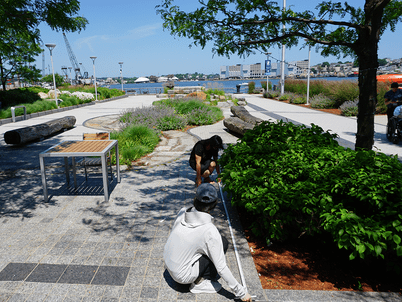
- 2024 Teams and Projects
- Past years' case studies
The Case Study Investigation (CSI) program is a unique research collaboration and training program for faculty, students, and practitioners.
Through CSI, LAF funded faculty-student research teams work with leading practitioners to document the impacts of exemplary, high-performing landscape projects. Teams develop methods to quantify the environmental, social, and economic benefits of built projects and produce Case Study Briefs for LAF’s Landscape Performance Series .
Faculty and design firms apply to CSI in partnership to produce a case study of a specific built landscape project.* Each research team is led by a faculty CSI Research Fellow and supported by a student Research Assistant. The academic team interfaces with a Firm Liaison, who provides information about the project goals, design, design and construction process, and intended performance. Clients, site managers, and other project stakeholders may also contribute data and insights.
The CSI program runs annually from February to August. During the spring, faculty-student teams work with firm liaisons to develop the research plan and case study narrative. Site visits and field data collection are primarily conducted during the summer. The academic teams use this information to craft the performance benefits and document the project in the online Case Study Brief format. Throughout this process, LAF provides training, iterative feedback, and opportunities for interaction among teams. Final case studies undergo a peer review process and are published to the Landscape Performance Series in the fall.
* LAF may be able to assist in matching prospective CSI Research Fellows with prospective firms/projects based on geographic proximity, common interests, and relevant expertise. Potential applicants wishing to be matched should contact LAF well in advance of the application deadline to discuss.
Program Goals
The CSI program is highly collaborative and helps to bridge the gap between research and design practice. By investing in this research, LAF is generating much-needed information and precedents to evaluate performance, demonstrate value, and make the case for sustainable landscape solutions. The Landscape Performance Series database of over 180 case studies is used by designers, students, researchers, journalists, policy-makers, and advocates.
Because resources (including time, expertise, and funding) are often limited for performance evaluation, the CSI program seeks to identify valid, defensible, and replicable metrics and methods that can be used within a short timeframe by non-experts with limited resources. This makes the 6-month CSI program an ideal testing ground for new methods.
As a training program, CSI is an important impetus in moving the landscape architecture discipline toward designing every project with specific performance objectives, documenting project goals and design intent, routinely collecting performance data, and integrating landscape performance in design education.
Case Study Investigation (CSI) Overview CSI Research Fellows CSI Firms and Projects Application Process CSI FAQs
LAF is grateful to the many individuals and organizations that provide financial support towards fulfilling our mission to support the preservation, improvement, and enhancement of the environment.
Much of what LAF is able to accomplish would not be possible without the thought leadership and financial investment of our major supporters, including ASLA, which provides over $125,000 of in-kind support annually.

- View All Donors
- Become a Supporter
Utility navigation
Connect with us, stay in the know, support laf.
As a non-member, charitable organization we rely on the support of our generous donors.
Make a Donation
- Landscape Performance
- Case Study Investigation
- Deb Mitchell Research Grant
- CSI Research Fellows
- CSI Firms and Projects
- Application Process
- Eligibility & Expectations
- Grant Recipients
- Student Scholarships
- Awards Available
- General Application Guidelines
- Scholarship FAQs
- LAF Honor Scholarship in Memory of Joe Lalli, FASLA
- LAF Honor Scholarship for Inclusive Community Design
- ASLA Council of Fellows Scholarships
- ASLA Florida Chapter Career Discovery Scholarships
- ASLA-NY Equitable Public Urban Space Scholarship
- Daniel Zwier/Permaloc Innovation Scholarship
- EDSA Minority Scholarship
- Hawaii Chapter ASLA/David T. Woolsey Scholarship
- Kenneth R. Brooks MLA Research Scholarship
- LandDesign Equity, Diversity, and Inclusion Scholarship
- Landscape Forms Diversity, Equity and Inclusion Scholarship
- Landscape Forms Scholarship in Memory of Peter Schaudt, FASLA
- MIG Scholarship for the Design of Equitable and Inclusive Environments
- Rain Bird Intelligent Use of Water Scholarship
- Steven G. King Play Environments Scholarship
- Douglas Dockery Thomas Fellowship in Garden History and Design
- Program Expectations
- Ignite FAQs
- For Internship Providers
- For Mentors
- LAF Fellowship for Innovation and Leadership
- Olmsted Scholars Program
- Award & Expectations
- Fellowship FAQs
- LAF Fellows
- Nomination and Selection Process
- Nominee Submission Packet
- Recognition and Benefits
- Past Olmsted Scholars
- LAF Medal and Founders' Award
- Ndubisi Service Award
- Legacy Award
- Ignite and Fuel
- 50 & Forward
- LAF Legacy Society
- Ways to Give
- Action Plan
- Up Your Game
- Superstudio
- Hispanoamérica
- Work at ArchDaily
- Terms of Use
- Privacy Policy
- Cookie Policy
6 Urban Design Projects With Nature-Based Solutions
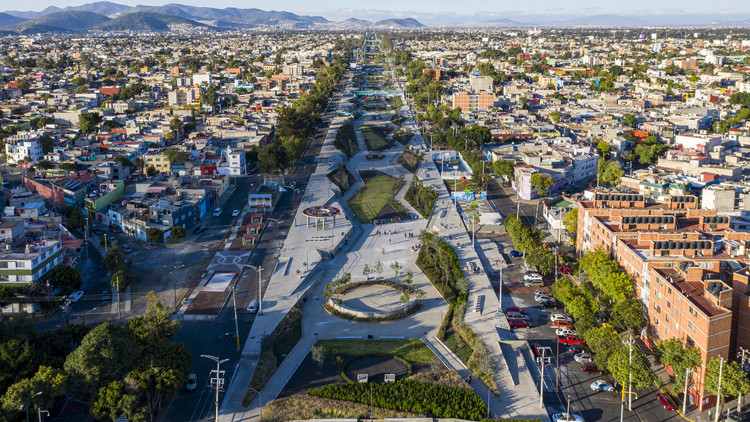
- Written by Camilla Ghisleni | Translated by Tarsila Duduch
- Published on July 24, 2022
Extreme natural events are becoming increasingly frequent all over the world. Numerous studies indicate that floods, storms, and sea-level rise could affect more than 800 million people worldwide, ultimately costing cities $1 trillion per year by the middle of the century. This suggests that urban survival depends on addressing urban vulnerability as a matter of urgency to protect the city and the population.

Given the background, many urban design projects started to introduce nature-based solutions (NBS) to provide sustainable management of ecosystems to tackle different environmental challenges. These solutions can reconnect the population with nature, mitigate air pollution, improve thermal comfort in the cities, reduce the effect of urban heat islands, and manage stormwater runoff, among many other benefits to the environment , and to the physical and mental health of urban dwellers. Moreover, NBS can also contribute towards creative designs that can cost much less than traditional solutions.
Below, we have selected six urban projects that embody nature-based solutions addressing different challenges of the contemporary world.
Bishan-Ang Mo Kio Park, Singapore
Nature-based solutions require stepping outside the comfort zone, trying creative non-obvious alternatives, and close collaboration between many different work fronts. This process is challenging, but not impossible, as we can see in the Bishan-Ang Mo Kio Park in Singapore .
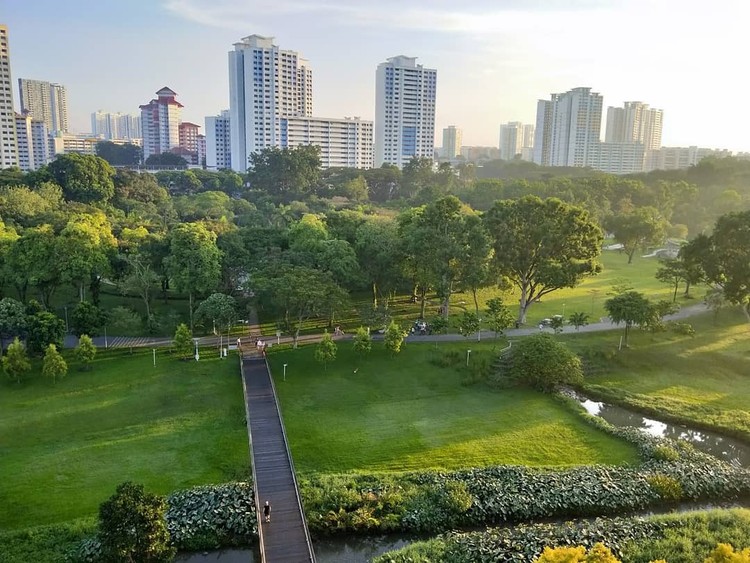
A few decades ago, the city decided to channelize the Kallang River creating a linear fenced canal that was a clear dividing line between the park and community. In dire need of an upgrade, the concrete canal could be redesigned but Singapore's national water agency decided to naturalize the river by restoring the original riverbed and floodplain. The 2.7 km straight concrete drainage channel was torn down and transformed into a meandering 3.2 km long natural river.
The result is a blue-green infrastructure project that provides flood prevention and improved water quality, increasing the benefits of the canal to the community. Combining natural materials, civil engineering techniques, and plants that can filter and absorb water was essential to stabilize the riverbanks and prevent erosion.
The National University of Singapore carried out a cost-benefit analysis that reported that rebuilding the concrete canal would cost about US$94 million (133 million SGD, Singapore dollars). Naturalization, on the other hand, cost just under US$50 million (70 million SGD) and further contributed to expanding and reconnecting the park areas to the city.

In other words, besides all the environmental benefits from the improved flood management and water quality, and the positive impact on people's physical and mental well-being by bringing them closer to nature, this NBS has also generated significant financial savings, achieving great results for a fraction of the cost of traditional solutions.
Green Corridors, Colombia
Over the past few years, city authorities of the Colombian city of Medellín have transformed the verges of 18 roads and 12 waterways into a green paradise. The Green Corridors project consists of planting trees along thoroughfares to mitigate the effects of urban heat islands caused mainly by the overuse of concrete and asphalt.

For example, the Avenida Oriental, one of the busiest roads in the city, was remodeled and had over 2 kilometers of paving on the pedestrian island and sidewalks replaced by gardens. More than 600 trees, palms, and thousands of smaller plants of carefully selected species have been planted, allowing the native wildlife to return to the area. Today we can see many different birds, such as parakeets and parrots, also butterflies, and even squirrels traveling through the city.
The initiative focused on areas that most lacked green spaces and managed to reduce air temperature by more than 2°C. The Green Corridor project won the 2019 Ashden Award for Cooling by Nature Award, supported by the Kigali Cooling Efficiency Program.
Rain Garden, Brazil
Similar to the previous project, this one also addresses the issue of impermeability of the urban landscape. Rain gardens are specifically designed to reduce the flow rate, total quantity, and pollutant load of stormwater runoff. This practice is used to treat urban runoff using plants, stones, and other natural or engineered elements. Suspended solids are filtered out of the water as it moves down through the soil and interspersed plant roots. These gardens can be executed near sidewalks, roads, flowerbeds, or even inside lots.

In 2019, the first rain garden in the city of Rio de Janeiro was installed at the Fundição Progresso Cultural Center , kicking off with an action called Dia da QuebrAção (Wrecking Day) in which the concrete sidewalk in front of the building began to be removed, to be replaced with 200 square meters of green space. Cecilia Herzog and Daniel Gabrielli, who were in charge of the project, say that bringing nature back to urban life and learning from it, cooperating with all species, and using nature's techniques for the benefit of the city, is a major paradigm for the 21st century.
Lineal Gran Canal Park, Mexico
Like the green corridors in Medellín, this linear park in Mexico City is based on environmental regeneration, through reforestation of the urban fabric and restoration of soil permeability, which has resulted in an increase of 16% in the relative humidity of the air and a reduction of up to 5% in temperature, mitigating the effect of heat islands.

The park provides many environmental benefits, but furthermore, it symbolizes the reclaiming of a neglected space. It was built over the capital's historic Grand Canal structure, integrating more than 70,000 square meters of land that used to be divided by this harsh line in the urban fabric. The intervention focused on recovering the native vegetation and riparian forest of the old canal, transforming the area into a 100% permeable public space.

Stormwater Wetland Park, China
This park is located right in the middle of the city, in an area that is listed as a protected regional wetland. The site is surrounded by roads and dense development on four sides, so water sources were being cut, and the wetland was under threat. The architects' strategy was to transform the dying wetland into a ‘green sponge,’ an urban stormwater park which not only rescues the disappearing wetland but also provides multiple services for the new urban community.

The project follows four guidelines. First, the central part of the existing wetland was left untouched, allowing it to evolve and transform naturally. The second strategy was to create a ring of ponds and mounds surrounding the former wetland using simple cut-and-fill techniques, which creates a buffer zone for the core of the wetland and a welcoming landscape filter between nature and the city. Third, a network of paths and urban furniture on ground level, allowing visitors to experience walking through a forest. And finally, the fourth strategy was to create elevated walkways that connect the scattered mounds with platforms and viewing towers that frame different perspectives of the natural landscape.

This nature-based solution has transformed the wetland into a multifunctional stormwater park that collects, filters, stores rainwater, and infiltrates the aquifer while being productive and pro-life, providing new recreational and aesthetic experiences for the city. The park has greatly contributed to the survival of the natural environment while also acting as an effective drainage green infrastructure for the area, which was frequently affected by floods from June to August.
Urban Farming in several countries
Urban farming has been a growing practice in many cities around the world through independent or governmental initiatives. The city of San Francisco, for example, is giving tax breaks for allowing communal urban farming on empty lots. In Tokyo, five rooftop community vegetable gardens located on top of train stations were inaugurated in 2014. In Barcelona, independent initiatives run by retired people created large vegetable gardens in abandoned peripheral areas.

Meanwhile, the 'Quintais Susentáveis' (sustainable backyards) initiative in the state of Roraima, northern Brazil, stands out because it combines sustainable production based on agroecology, food & nutrition security with income-generating activities for vulnerable people, promoting social and labor inclusion. The program educates families in sustainable production and also encourages them to sell their products in local markets. This allows many possibilities, including the production of seedlings and organic compost.

The project also relies heavily on collaborative activities. The plant species are selected with community participation through a survey carried out to understand the family's eating habits so that everyone feels included in the process.
Image gallery

- Sustainability
想阅读文章的中文版本吗?

6个基于自然解决方案的城市设计项目
You've started following your first account, did you know.
You'll now receive updates based on what you follow! Personalize your stream and start following your favorite authors, offices and users.
A Case Study on Landscape Design of Campus in University of Technology
Ieee account.
- Change Username/Password
- Update Address
Purchase Details
- Payment Options
- Order History
- View Purchased Documents
Profile Information
- Communications Preferences
- Profession and Education
- Technical Interests
- US & Canada: +1 800 678 4333
- Worldwide: +1 732 981 0060
- Contact & Support
- About IEEE Xplore
- Accessibility
- Terms of Use
- Nondiscrimination Policy
- Privacy & Opting Out of Cookies
A not-for-profit organization, IEEE is the world's largest technical professional organization dedicated to advancing technology for the benefit of humanity. © Copyright 2024 IEEE - All rights reserved. Use of this web site signifies your agreement to the terms and conditions.
The Auckland Design Manual is currently offline. Our technicians are working to get it back online as soon as possible.

IMAGES
VIDEO
COMMENTS
The Landscape Performance Series Case Study Briefs are a searchable database of over 190 exemplary built projects with quantified environmental, economic and social benefits. The Case Study Briefs are produced by the Landscape Architecture Foundation (LAF), working in conjunction with designers and/or academic research teams to assess ...
Landscape Architecture. Hangzhou Xiaohe Park / Kengo Kuma & Associates Common Thread / SO-IL AYURU the Forest Temple / Atelier Marko Brajovic
Habitat restoration, energy efficiency, and conservation of flora and fauna are all important attributes of sustainable landscape design. Here are 15 such projects. 1. Nature Discovery Park, Hong Kong. Designed by LAAB architects, Natural Discovery Park is situated in the heart of the city.
40 case studies illustrate the transformative effects of sustainable landscape design. San Francisco, California, U.S.A. Watch animations created with SketchUp to learn how sustainable design works. Sunnylands Center and Gardens Rancho Mirage, California, U.S.A. Pete V. Domenici U.S. Courthouse ...
CSI supports designers in assessing and documenting the performance of exemplary landscape projects. Through CSI, select practitioners work with LAF-funded faculty-student research teams to produce Case Study Briefs for the Landscape Performance Series. This online database of over 180 case studies is used by designers, students, researchers, policy-makers, and advocates to find precedents and ...
2. 1c. 1a - 1c The cultural landscape of the region is characterized by its rich agricultural heritage, a result of the area's natural system of dramatic mountains, large rivers, and alluvial ...
The art of landscaping is the arrangement of nature's raw material elements, like vegetation and planting, combined with nonliving elements, such as exterior structures, paving, and decking, in ...
Resilient landscape planning and design offers a way forward for communities. We can now use multi-layered systems of protection, ... The guide includes numerous case studies and resources demonstrating multi-benefit systems as well as the small-scale solutions that fit within those. The guide also explains landscape architects' role in the ...
The new case studies were carefully selected to show a diversity of landscape types and scales and reflect geographical diversity. There are now a total of 40 case studies. New case studies include: Burbank Water & Power Eco-campus, Burbank, California, a sustainable landscape for employees and visitors in the midst of a working power plant.
It directly influenced LAF's Land and Community Design Case Study Series of books published between 2001 and 2009, and it also informed the development of the format and method that LAF uses to produce the Case Study Briefs published on LandscapePerformance.org. See the original report in this 2001 article in Landscape Journal.
News Misc Landscape Design ADTopic 2020 Interiors Cite: Delaqua, Victor. "Indoor Landscaping: 30 Projects that Bring Life into Interiors" [Paisagismo em interiores: 30 projetos que trazem o verde ...
The Landscape Architecture Foundation has been identifying priorities and strengthening the discipline to meet weighty environmental, social, and economic challenges. They believe in the power of design to create a healthier, more equitable, and sustainable world. Follow this link to a PDF of their A Case Study Method for Landscape Architecture.
Compendium of Landscape Architecture [including 250 case studies from around the world] by Karl Ludwig This fundamental work provides an overview of the whole creative realm of contemporary landscape architecture. Every aspect of the design and production of these public and private spaces is thematized and elucidated.
Case studies in urban planning, architecture, urban design, and urban land development are most similar to ones used in landscape architecture. Research in architecture, planning, and urban design often relies on a case study approach, be it a historical, social, or policy-oriented ex a m i n a t i o n . Similar Efforts A number of case study ...
Seminal Case Studies in Landscape Architecture 13 Critical Dimensions 14 A Suggested Format for Case Studies 15 Methods 16 A Landscape Typology 17 An Issue Typology 18 ... (1994), and Case Study Research: Design and Methods, 1993 both published by Sage. A Case Study Method for Landscape Architecture 10 process.
The Case Study Investigation (CSI) program initiated by LAF (Landscape Architecture Foundation) is a research collaboration between LAF-funded faculty-student research teams and leading ...
Faculty of Architecture and Design,, Department of Landscape Architecture, 25030, Kampüs Erzurum, Turkey. ICENS International Conference on Engineering and Natural Science , 24-28 May 2016 , Sarajevo
The Case Study Investigation (CSI) program is a unique research collaboration and training program for faculty, students, and practitioners. Through CSI, LAF funded faculty-student research teams work with leading practitioners to document the impacts of exemplary, high-performing landscape projects. Teams develop methods to quantify the environmental, social, and economic benefits of built ...
6 Urban Design Projects With Nature-Based Solutions. Extreme natural events are becoming increasingly frequent all over the world. Numerous studies indicate that floods, storms, and sea-level rise ...
A Case Study on Landscape Design of Campus in University of Technology Abstract: The character of a campus is a spirit of place that cannot be touched. Design practice is a project that is implemented. How to make the campus landscape with "ideal" meaning and the design practice with "realistic" meaning influence the campus users ...
This report summarizes a research project commissioned by the Landscape Architecture Foundation (LAF) in 1997 and completed in 1998 for development of a case study method for landscape architecture.
Building information modeling (BIM) has been used by the architectural and engineering disciplines to streamline the building design, construction, and management process, but there has been much more limited experience in extending the application to landscape design and implementation. This study integrated BIM software (Autodesk InfraWorks 2024.1) with a dynamic, process-oriented ...
Our technicians are working to get it back online as soon as possible.